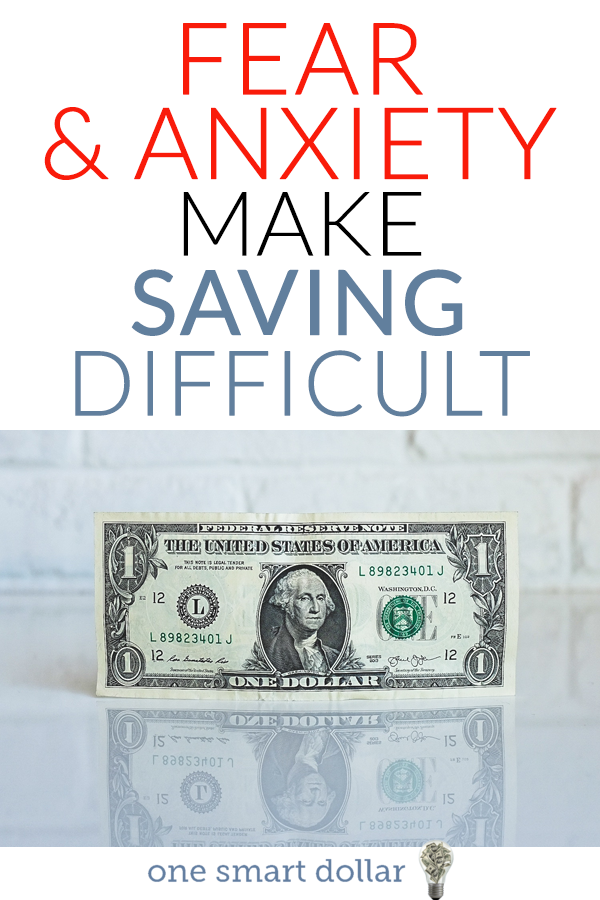
Fear and anxiety manifest in many ways. When it comes to money matters, it is very common for people to express fearful and anxious feelings through avoidance. They may avoid looking at their bank account balances or opening bills. No matter what it looks like, people often find themselves drowning in the worry that they will lose everything. As a result, they do nothing.
This is a problem because inaction can keep you from meeting your saving and investment goals.
What causes this fear and anxiety?
When it comes to saving, the question “How do I save?” always comes up.
Deep down, people know that it is pretty straightforward. You set aside a designated dollar amount or percentage of your income for savings. But accomplishing this requires two things: that one take a hard look at the numbers and exercise discipline.
Generally, neither of those things are very pleasant. And research shows that when it comes to finances, it’s very common for people to wait until there is a crisis to ask for help. Which makes looking at the numbers traumatic for some individuals. Sometimes, just the idea of making a budget can throw people into a panic attack. The fear of running out of a money is a very real experience for many, many people.
Importance of Childhood Experiences
It is important to note that we learn behaviors like these from our parents or guardians when we are children. If we only see our parents working on their budget or checking bank statements when there is trouble, we might grow up confused.
As a child, we might make sense of that situation by deciding that the only time to look at your financial information is when we are already in trouble. Over time, if this belief follows into adulthood, then it’s understandable why some adults are so reluctant to budget or make any kind of financial plans. It signals tragedy and stress to their brains.
This stress can turn into full blown fear of financial ruin. But it doesn’t always have to be that way.
We can create new memories and attitudes towards money by taking some time to educate ourselves and build healthy money habits.
In an attempt to try to make the best choices possible, we take the time to do research and we sometimes give ourselves too many choices. This is frequently called “analysis paralysis”.
All of this adds up to people feeling very confused. Confused about what to do. Confused about what not to do. Confused about the order in which to do things. So it’s understandable why people would do nothing.
Taking small, but significant, steps is the key. You can only eat an elephant one bite at a time!
Where to start?
In the case of saving and investing, it feels challenging and elusive for many individuals. Earlier, we talked about what it takes to find the money to start saving. The most important thing to remember is that you don’t have to do it alone. There are countless people in the financial services industry who can help you. This can be on the simpler end of helping make a budget and sort through expenses or on the more complex end by creating custom financial plans.
But, if you’re not ready to talk to someone, try easing your way into using technology. Personal Capital is one software tool that can help you get a bird’s eye view of all your finances. Click here to check out our review, and see if it could be a good option for you.
Technology is also an easy way to get started with investing. There are many platforms and apps available to help you get started. Acorns is one of our favorite apps for beginners because it limits your choices. Those who are easily overwhelmed might find fewer options helpful. All you have to do is choose what kind of investor you are: conservative, moderate, or aggressive and Acorns pretty much takes care of the rest. Check out our review here.
All in all, fear and anxiety around money are very common to experience. It’s important to be aware that with some patience and time, these challenging reactions can be unlearned and better controlled.

